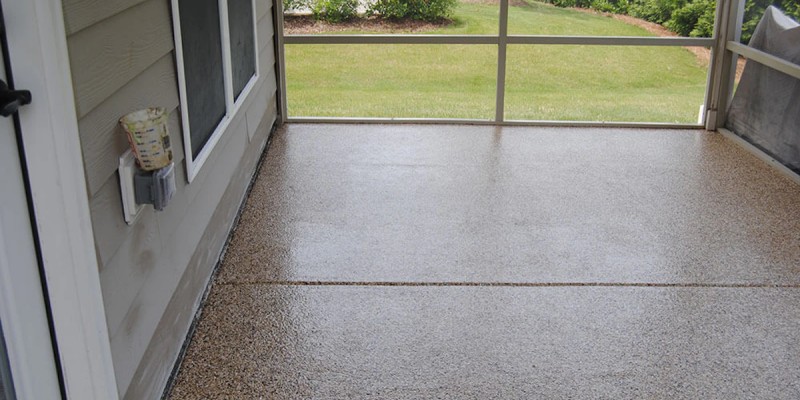The Differences Between Interior and Exterior Concrete Floors2023-08-15
Interior and exterior concrete floors may look similar, there are some key differences between the two. Understanding these distinctions can help us make an informed decision when selecting the appropriate flooring for space.
Installation Process: The installation process for interior and exterior concrete floors differs significantly. Interior concrete floors are typically poured and finished inside a controlled environment, allowing for precise measurements, curing time, and a smoother finish. Conversely, exterior concrete floors are poured and finished outdoors, which means they are exposed to various weather conditions, temperature changes, and potential surface irregularities.
Durability and Strength: Both interior and exterior concrete floors are known for their durability and strength. However, exterior concrete floors need to be designed to withstand additional external factors such as environmental damage, freeze-thaw cycles, and heavy foot and vehicle traffic. Therefore, exterior concrete floors are often thicker and reinforced with steel for added strength.
Surface Texture and Finish: Interior concrete floors are commonly polished, stained, or sealed to achieve a desired look. These finishes give a polished or high-gloss appearance suitable for indoor spaces. Exterior concrete floors, on the other hand, require a different approach. The surface texture of an exterior floor is often left rough or brushed to provide better traction and prevent slips and falls, especially in wet or icy conditions.
Weather Resistance: One of the most significant differences between interior and exterior concrete floors lies in their ability to withstand weather conditions. Interior concrete floors are not exposed to the elements, making them less susceptible to issues such as moisture penetration, mold growth, and UV damage. In contrast, exterior concrete floors must be sealed and protected against moisture, extreme temperatures, and harsh weather conditions.
Maintenance and Care: The maintenance and care required for interior and exterior concrete floors differ due to their exposure to different conditions. Interior concrete floors may require periodic sealing and occasional maintenance to retain their appearance and durability. Exterior concrete floors, on the other hand, may need more frequent maintenance due to exposure to dirt, debris, and the effects of weather. Regular cleaning, sealing, and occasional repairs are necessary to ensure the longevity of exterior concrete floors.
By understanding these differences, we can make an informed decision and select the most suitable concrete flooring option for specific needs.
DTS Diamond Tools is a professional manufacturer of diamond tooling for concrete grinding and concrete polishing. We provide a wide range of diamond tooling on the market such as Lavina metal bond QuickChange tools and ceramic bond edge grinding wheel with lowest cost and most reliable quality. If you are looking for a solution to your concrete floor, we can provide you with professional advice and guidance, welcome to click the picture to get into our web.

- Company Info
- Feedback
- Customer Reviews
- About Us
- Contact Us
- Blog
- Help Center
- User Center
- Forget Password
- My Orders
- Tracking Order
- My Account
- Register



